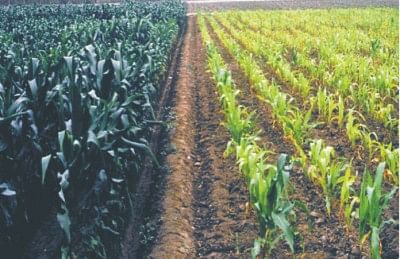Global warming and priorities of plant breeding

GLOBAL warming is an increase of average air temperature of the Earth's surface and oceans' temperature. The most important challenge for sustainable agriculture is climate uncertainty, more specifically global warming. According to Gallup Polls, over a third of the world's population is unaware of global warming, with people in developing countries less aware than those in developed countries. Anticipated changes in global climate leading to more frequent extreme conditions will need adaptations of agricultural crops in order to sustain agricultural production.
This anthropogenic climate change first came to the consideration of the policy makers after the assessment of the Intergovernmental Panel on Climate Change (IPCC) in 1990. According to IPCC global air temperature increased 0.74 ± 0.18 °C (1.33 ± 0.32 °F) between the start and the end of the 20th century. The main causes for global warming is due to increasing concentrations of greenhouse gases, resulting from anthropogenic activity, particularly burning of fossil fuel and unexpected deforestation.
The consequence of the global warming is increasing the average air and ocean temperatures, leading to gross melting of snow and ice, and rising global sea level. Increased air temperature directly as well as indirectly affect the agricultural production. In the last decade, severe drought and heat have led to significant crop yield losses in the world including Bangladesh. Furthermore, the magnitude of sea level rising is another vulnerability of Bangladesh.
The coastal areas get frequently inundated with saline sea water during high tidal period and are not completely protected against salt water intrusion. The drought, heat and salinity affect crop yield at almost all the crop growth stages, with the flowering stage being the most vulnerable. The response of plants to water deficiency and salt toxicity involve both short-term physiological responses as well as long-term structural and morphological changes in crops.
The northern part such as Greater Rangpur, Dinajpur and Barind Tract of Rajshahi are the drought prone areas of Bangladesh. The limited irrigation of these areas reduces cropping intensity than the other part of the country where irrigation allows two or three rice crops annually. On the other hand, most of the salinity prone parts are Khulna, Satkhira, Bagerhat, Pirozpur, Jhalakathi, Barisal, Patuakhali, Chittagong, Cox's Bazar, Noakhali, Borguna and Bhola.
The coastal area of Bangladesh constitutes 20% to 30% of the agricultural land. Among the coastal areas, the Sundarbans (mangrove forest) covers about 4,500 km2. The rest of the coastal area is agricultural land. The farmers of these areas are severely affected with salinity problem and they need salt tolerant crop varieties. Study justifies planning of plant breeding for global warming to develop drought and salinity tolerant crops in the future.
In stress conditions plant activates mechanism of acclimation and adaptation. Adaptation is related to heritable modifications. Molecular control mechanisms for abiotic stress (drought and/or salinity) tolerance are based on the regulation of stress-related genes. Acclimation is defined as the generation of non-inheritable modifications that reflect the physiological change of the plant to cope with abiotic stress.
However, conventional Plant Breeding has relied upon repeated recombination of adapted material to search for relatively small improvements. Introduction of new genes from unadapted material to the high yielding gene pool has mostly been inefficient, particularly for complex traits like drought and/or salinity stress tolerance. In this case, marker assisted selection (MAS) and quantitative trait loci (QTL) May be more effective tool for improvement of drought and salinity tolerance in agricultural crops.
Finally, it can be said that we should utilise molecular biology tools and conventional breeding simultaneously for the genetic improvement of abiotic stress tolerance. Therefore, government should patronise such research and ensure proper fundings.

 For all latest news, follow The Daily Star's Google News channel.
For all latest news, follow The Daily Star's Google News channel. 



Comments